Oct 2024 Edition

Impact Factor 2023
Hard Graft: The Latest Innovations in Kidney Transplantation From ISN Journals
Explore recent findings on complex issues in kidney transplantation from Kidney International® and Kidney International Reports®. From strategies to desensitize kidney transplant recipients to salvaging donated kidneys from warm ischemia, these papers offer cutting-edge research and forward-thinking insights, pushing the boundaries of transplant medicine and shaping the future of kidney care.

KIDNEY INTERNATIONAL ARTICLES |
CAR T-cell Therapy — Paving the Way for Sensitized Kidney Transplant Patients
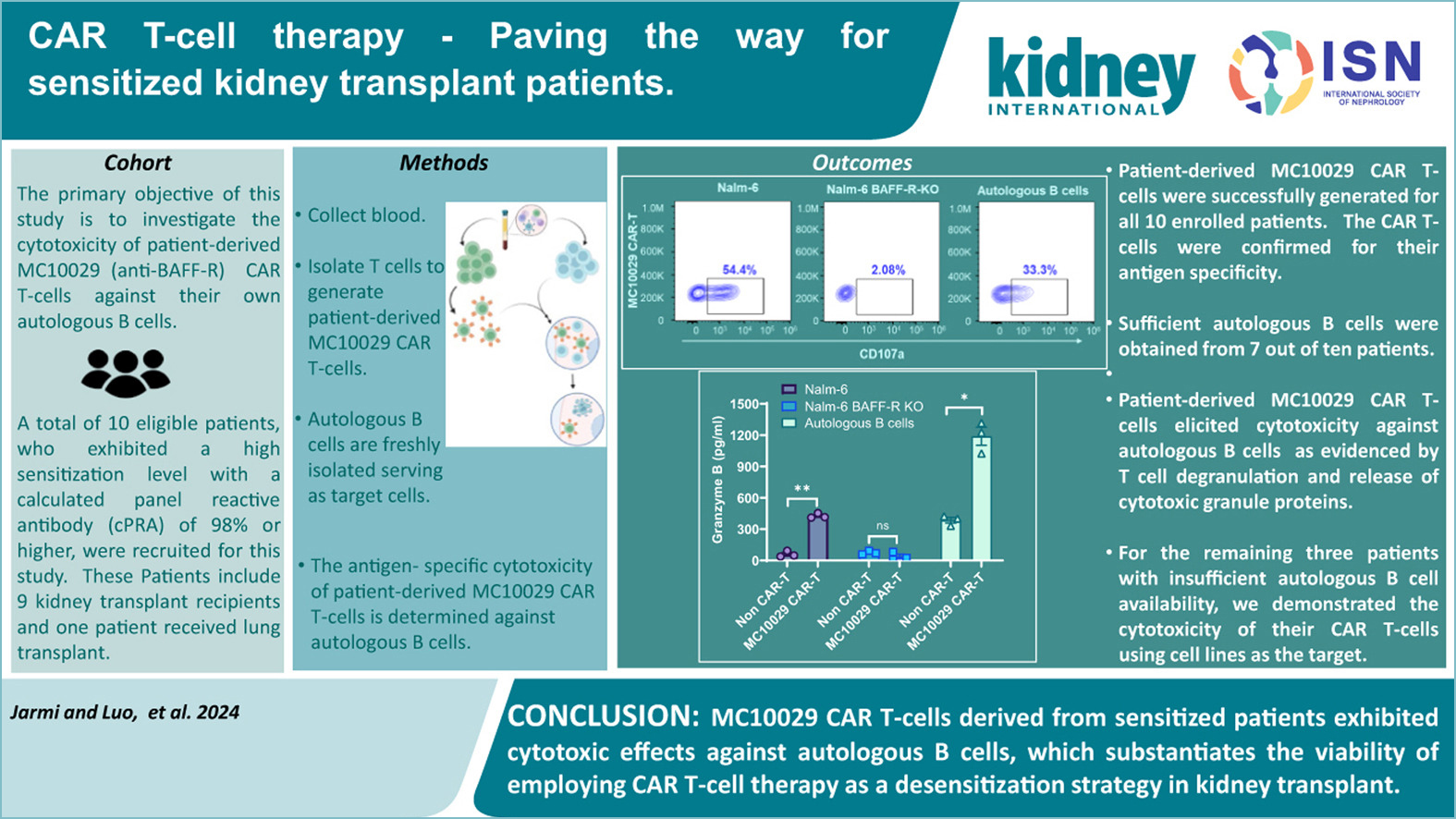
One of the major challenges in organ transplantation is sensitization, which often leads to extended waiting times for patients on transplant lists. Despite the kidney allocation procedures in place, highly sensitized patients with >99.5% panel reactive antibodies continue to face inequities in receiving transplants.
Various strategies have been explored to desensitize these patients, though their long-term effectiveness remains uncertain. These strategies include plasmapheresis to reduce antibody levels, IgG-degrading enzymes to cleave donor-specific antibodies, monoclonal antibodies targeting B cells, and manipulation of the complement system.
In this study, the authors explored the use of chimeric antigen receptor (CAR) T cells, specifically MC10029, derived from patients with cytotoxic effects against autologous B cells. These CAR T cells were engineered to recognize and target the B-cell activating factor receptor to eliminate B cells in sensitized kidney transplant recipients. The results demonstrate the potential of CAR T-cell therapy as a promising approach for desensitization in kidney transplantation.
Physiologic Homeostasis After Pig-to-Human Kidney Xenotransplantation
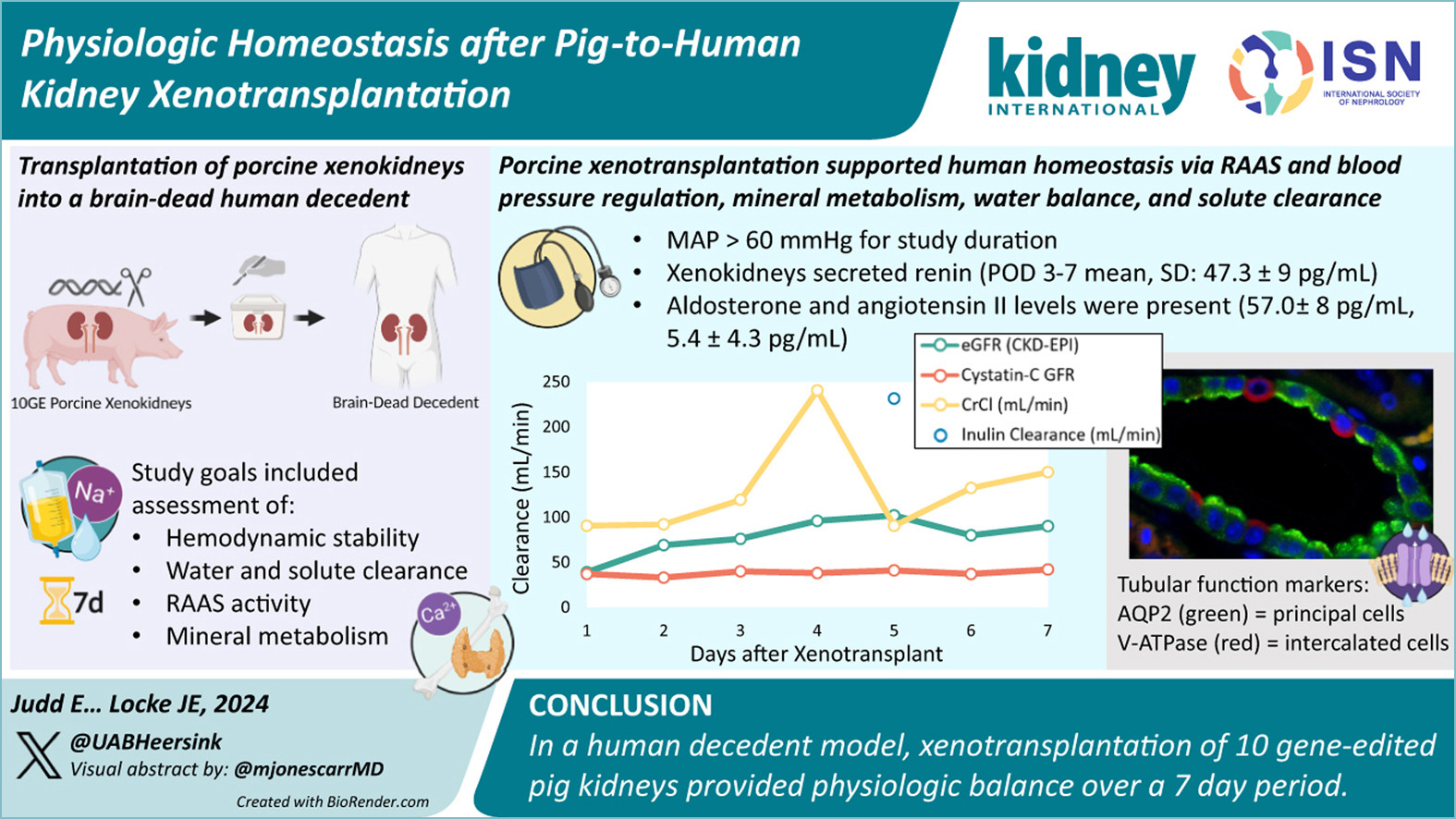 The concept of transplanting organs from other species, known as xenotransplantation, has garnered increased attention in recent medical discussions. Xenografts are now being explored as a potential solution to address the growing demand for kidney transplants. In a recent study by Judd et al., pig kidneys were transplanted into a braindead human to evaluate their ability to maintain physiological homeostasis.
The concept of transplanting organs from other species, known as xenotransplantation, has garnered increased attention in recent medical discussions. Xenografts are now being explored as a potential solution to address the growing demand for kidney transplants. In a recent study by Judd et al., pig kidneys were transplanted into a braindead human to evaluate their ability to maintain physiological homeostasis.
The study examined factors such as water and solute clearance, proteinuria, reninangiotensin-aldosterone system activity, mineral metabolism, and parathyroid hormone regulation and assessed the immediate physiological response to a pig-to-human xenograft over seven days. However, the catabolic state of the brain-dead recipient, who requires chemical support to sustain organ function, adds complexity to the interpretation of the results. While previous xenotransplantation studies have been conducted in primates, this human study provides an important foundation for future research into the long-term effects of xenografts.
Developing a Genetic Testing Panel for Evaluation of Morbidities in Kidney Transplant Recipients
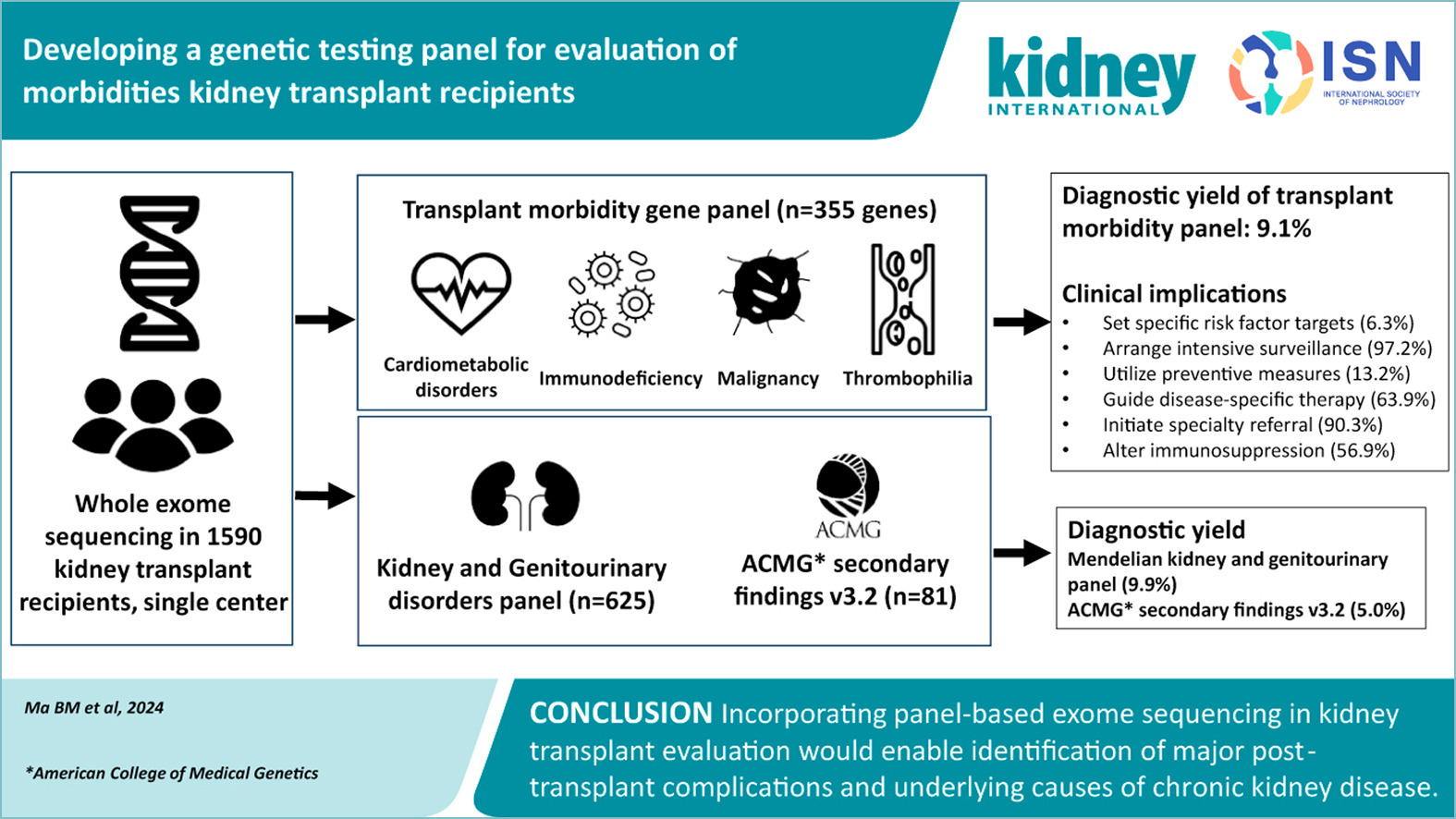
In this study, investigators developed a transplant morbidity panel comprising 355 genes associated with major post-transplant complications, with the goal of prospectively identifying monogenic conditions and personalizing post-transplant management.
The panel focused on complications such as cardiometabolic disorders, immunodeficiency, malignancy, and thrombophilia. To assess its utility, exome sequencing data from 1,590 kidney transplant recipients (KTRs) was analyzed. Additionally, 37 genes linked to monogenic kidney and genitourinary disorders were annotated.
Nearly 10% of KTRs had a diagnostic variant in one of the 37 genes associated with monogenic kidney and genitourinary disorders, while just over 9% carried a diagnostic variant for one of the 56 monogenic disorders in the morbidity gene panel, with cardiovascular disease being the most common.
These genetic insights could enable physicians to set specific risk factor targets, arrange intensive surveillance, implement preventive measures, guide disease-specific therapies, initiate specialty referrals, and adjust immunosuppression, thereby facilitating more personalized pre and post-transplant care.
Salvaging Donated Kidneys From Prolonged Warm Ischemia During Ex Vivo Hypothermic Oxygenated Perfusion

Prolonged warm ischemic time is a key reason for discarding organs donated after cardiac death, as it can cause complications like disseminated intravascular coagulation and capillary vasospasm, damaging organs and reducing transplant viability.
This study found that warm ischemia led to significant fibrinogen accumulation in hypoxic cell cultures and kidneys, suggesting microthrombi formation as a major factor in organ damage.
To counter this, researchers pre-flushed kidneys with snake venom plasmin to remove microthrombi, improving oxygen delivery and therapeutic effectiveness. They also used a carbon monoxide-releasing molecule (CORM-401) during hypothermic oxygenated perfusion, enhancing microcirculation and reducing mitochondrial injury.
Treated kidneys showed improved outcomes, with a 70% recipient survival rate versus none in the control group. This strategy could increase the number of viable donor organs by salvaging kidneys affected by warm ischemia
An Observational Cohort Study Examined the Change Point of Kidney Function Stabilization in the Initial Period After Transplantation

This study addresses the important issue of defining baseline kidney function after transplantation, a concept often used in both clinical and research settings yet poorly characterized.
The researchers propose a novel method using segmented regression to model the evolution of estimated glomerular filtration rate (eGFR) during the first year posttransplantation. Their analysis, conducted on a large cohort of patients from Belgium, the Netherlands and Germany, identified a change point in eGFR occurring on average at 43.7 ± 14.6 ml/min/1.73m² at a median of 6.5 days posttransplantation. This change point is considered the “baseline function.”
Although donor-recipient characteristics like donor type were linked to eGFR evolution, their predictive value for baseline kidney function was limited. The study shows heterogeneity in eGFR trajectories, suggesting favorable kidney function can occur despite early challenges, highlighting the complexity of post-transplant recovery.
KIDNEY INTERNATIONAL REPORTS ARTICLES |
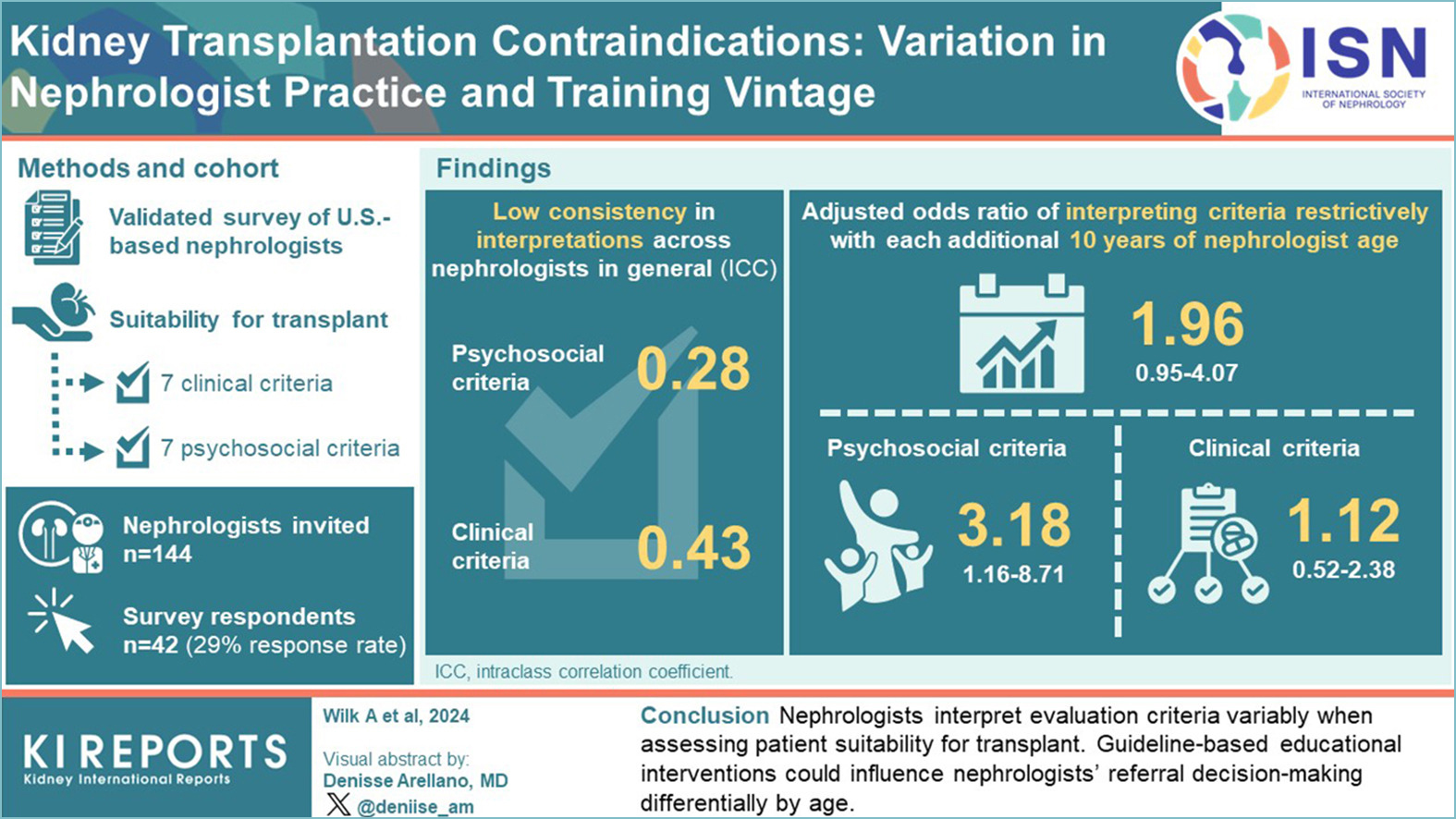
Healthcare leaders are aiming to make kidney transplantation more accessible, in part by encouraging nephrologists to refer more patients for transplant evaluation. However, it is unclear whether nephrologists trained some time ago assess patient eligibility differently, particularly in deciding which patients to refer.
This study focused on clinical and psychosocial criteria using a uniquely designed, iteratively validated survey of US-based nephrologists. The authors examined how nephrologist age correlated with referral decisions using logistic regression models, adjusting for individual and practice-level factors. They also measured variations in nephrologists’ restrictiveness, evaluating how criteria were interpreted as absolute or partial contraindications versus minor or negligible concerns.
The findings highlight that nephrologists’ interpretations of transplant eligibility criteria differ, with age-related differences in patient referrals possibly shaped by guidelinebased educational interventions.
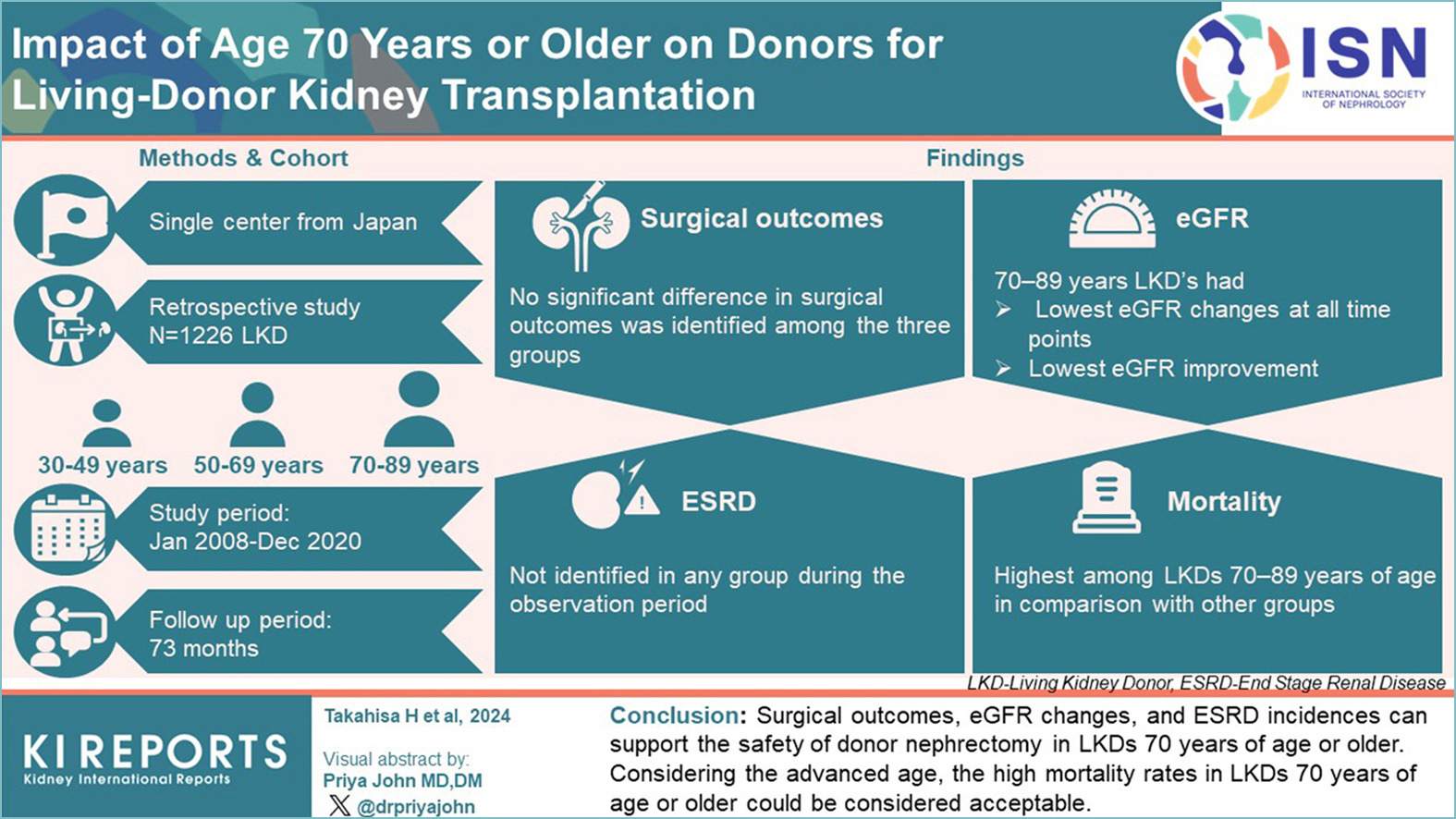
With the growing demand for kidney donations, the eligible age range for donors has expanded to include individuals over the age of 70. Donor health and fitness are thoroughly assessed to ensure suitability using criteria similar to those for younger donors.
In this recent study by Takahisa et al., the adaptive response after kidney donation and surgical outcomes were compared across different age groups over a 12-year period.
The findings revealed no differences in graft quality or surgical outcomes regardless of donor age. Furthermore, no progression to end-stage renal disease or significant changes in estimated glomerular filtration rate (eGFR) were observed. However, it is important to account for natural age-related eGFR changes when evaluating live kidney donors.
The findings support the safety of kidney donation from older individuals, which could expand the pool of potential donors.
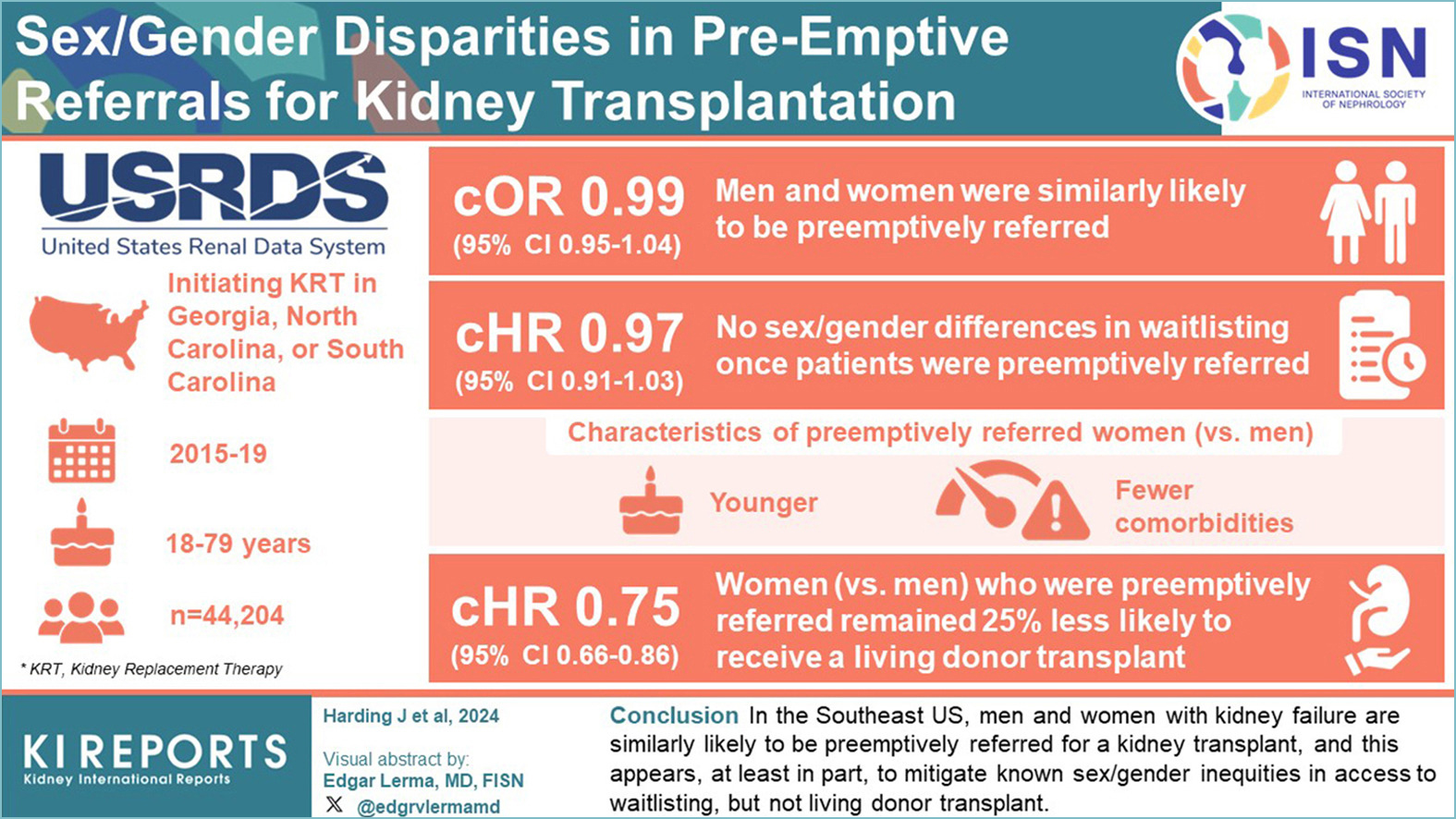
This study examined whether sex/gender inequities in access to kidney transplantation are associated with differences in preemptive referral, as well as the likelihood of waitlisting or receiving a living donor transplant among preemptively referred patients.
Adults initiating kidney replacement therapy between 2015 and 2019 in Georgia, North Carolina, and South Carolina were identified using the United States Renal Data System. Their data was linked to the Early Steps to Kidney Transplant Access Registry for preemptive referral information and followed until November 13, 2020, for outcomes such as waitlisting and living donor transplantation.
The results showed that men and women in Southeastern US had similar likelihoods of being preemptively referred and waitlisted. However, preemptively referred women were, on average, younger and had fewer comorbidities. Notably, women were 25% less likely to receive a living donor transplant.
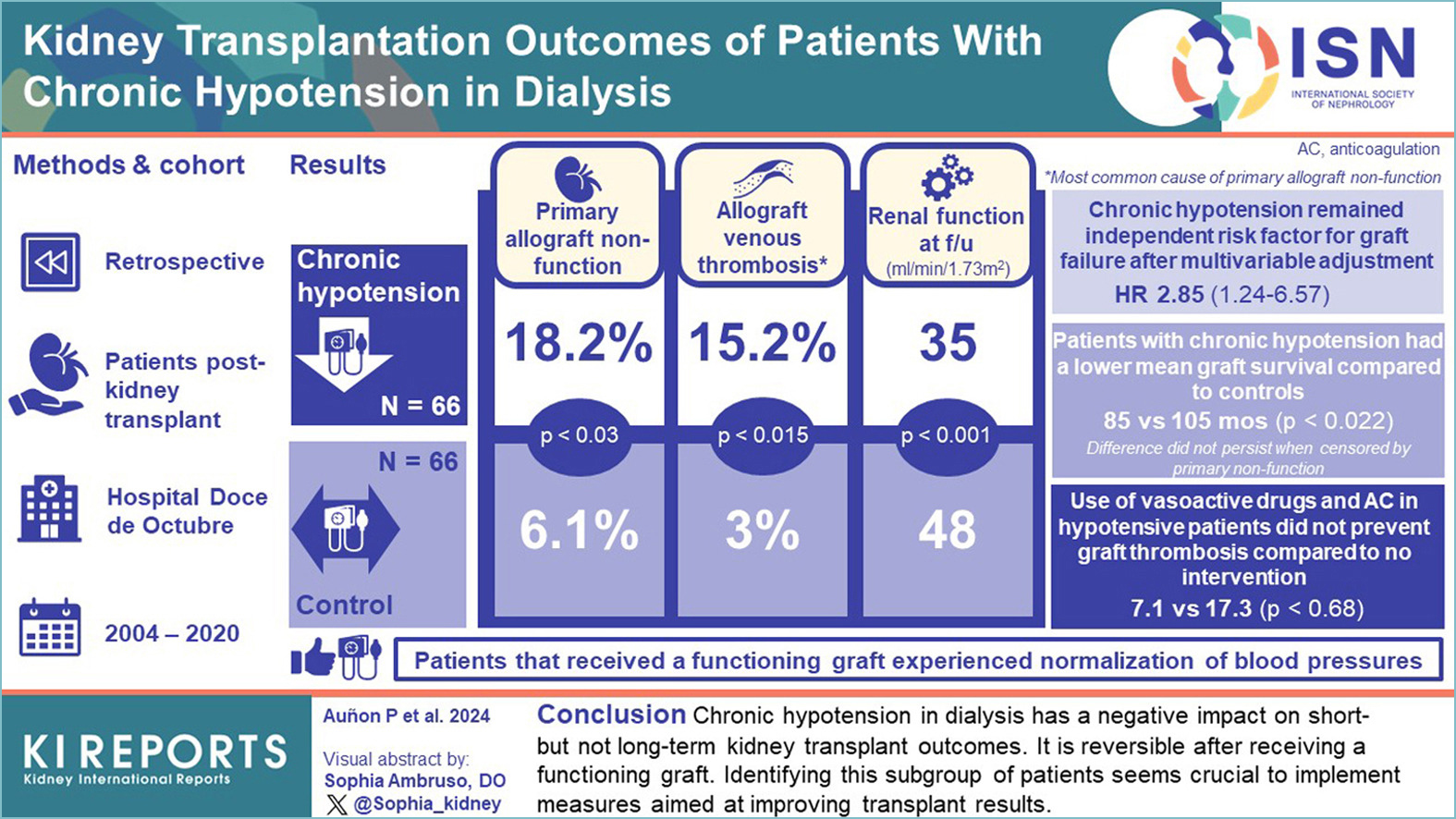
Persistent chronic hypotension affects 5-10% of dialysis patients and can impact kidney transplant outcomes, though it is often reversible post-transplant.
This study compared 66 hypotensive dialysis patients (systolic BP ≤ 100 mm Hg) undergoing kidney transplantation with 66 non-hypotensive controls. Hypotensive patients had worse short-term outcomes, including higher rates of primary non-function (18.2% vs. 6.1%, P = 0.03) due to venous thrombosis and poorer renal function at follow-up (eGFR 35 vs. 48 mL/min/1.73 m², P = 0.001). However, long-term graft survival did not significantly differ after adjusting for primary non-function.
The use of vasoactive drugs and anticoagulation in hypotensive patients was linked to a lower, though not statistically significant, rate of venous graft thrombosis (7.1% vs. 17.3%). Patients with chronic hypotension who received a functioning graft saw normalization of blood pressure. Overall, the study indicates that chronic hypotension in dialysis patients worsens short-term transplant outcomes but has a limited effect on long-term results.
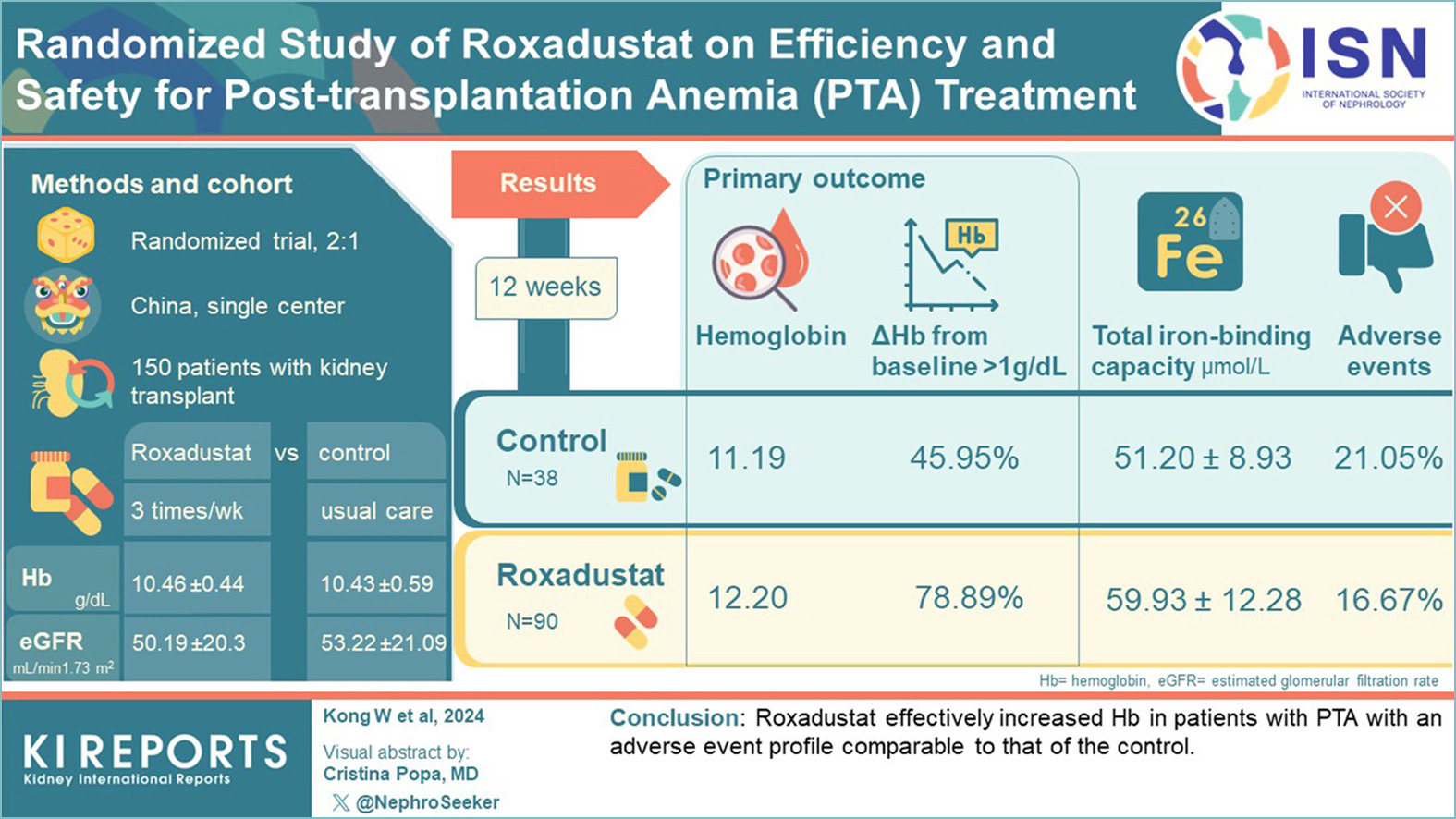
This study evaluated the efficacy and safety of roxadustat, an oral hypoxia-inducible factor prolyl hydroxylase inhibitor, for treating posttransplantation anemia (PTA) in 150 adult renal transplant recipients.
Participants were randomized into two groups: the experimental group received oral iron and roxadustat, while the control group received only oral iron for 12 weeks, followed by an extended roxadustat treatment phase. After 12 weeks, 128 participants completed the trial, with the experimental group achieving a higher mean hemoglobin (Hb) concentration (12.20 g/dl) compared to the control group (11.19 g/dl). Additionally, more participants in the experimental group reached Hb response targets, and significant improvements in serum iron, total iron-binding capacity, and transferrin levels were observed. The adverse event profiles were similar between the two groups.
Overall, roxadustat effectively increased Hb levels in PTA patients, demonstrating good efficacy and safety in this population.
